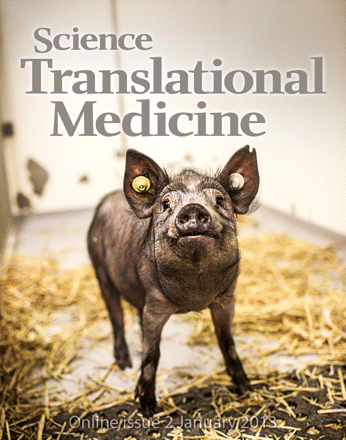Transgenic Minipigs For Translational Atherosclerosis Research Into New Drugs and Imaging Agents
Researchers from Aarhus University have developed the world’s first large-animal model of hypercholesterolemia that replicates human disease. The development makes it possible to further research into atherosclerosis pathogenesis, new drugs and imaging agents. The model uses Yucatan minipigs with similarities to the human cardiovascular system.

Translation: Zitta Glattrup Nygaard.
The discovery made by researchers at Aarhus University may be of future impact on diagnosis and treatment of atherosclerosis.
Atherosclerosis in humans develops unnoticed for decades before the disease suddenly leads to life-threatening complications of blood clots in the heart or brain. Today there are no good methods to detect the disease in its early stage.
The Sleeping Beauty
Researchers have now reported the creation of a pig model of accelerated atherosclerosis in which the pigs are genetically engineered to be hypercholesterolemic. A Sleeping Beauty transposon-based vector expressing liver-specific human D374Y-PCSK9 is used to create transgenic fibroblasts that are used for production of Yucatan minipig embryos.
“The Sleeping Beauty element is equipped with a disease gene that leads to the development of an unnaturally high level of hypercholesterolemia. By using this ancient genetic element, originally isolated from the genome of a common aquarium fish, we have now succeeded in generating transgenic minipigs that develop human-like atherosclerosis", says Associate Professor, PhD Jacob Giehm Mikkelsen from the Department of Biomedicine, Aarhus University.
When the minipigs are fed a high-fat, high-cholesterol diet, research has shown that the inserted disease gene develops a severely high cholesterol level accelerating atherosclerosis of the heart and great vessels in the course of a year.
"Because of the cardiovascular similarities as to size and structure between minipig and man, medical devices can be directly tested in the model. Among other things, we hope to develop imaging techniques that are able to visualize the location and level of atherosclerosis activity in the body," says Associate Professor, MD, PhD Jacob Fog Bentzon from the Department of Cardiology and Clinical Medicine, Aarhus University.
New and Better Drugs
The discovery has just been published in the prestigious journal of Science Translational Medicine.
"If such imaging techniques were available for clinical trials, they would greatly facilitate our understanding of the relationship between cause and effect between lifestyle factors and atherosclerosis, and it would speed up and improve the quality of the development of new drugs", says Jacob Fog Bentzon.
Eventually, the methods could be used to identify people who need preventive treatment and to measure the effect of new drugs and environmental factors in clinical studies.
The project was created in an interdisciplinary collaboration between researchers specializing in cardiovascular medicine, genetics and cloning within the framework of the DAGMAR research facility at Aarhus University. The project is supported by the Independent Research Council, the Lundbeck Foundation, the Danish Heart Foundation and the Danish National Advanced Technology Foundation.
Contact
Associate Professor, MD, PhD Jacob Fog Bentzon
Aarhus University, Department of Clinical Medicine
Direct Phone: 2536 7739
Associate Professor, PhD Jacob Giehm Mikkelsen
Aarhus University, Department of Biomedicine
Direct Phone: 8716 7767